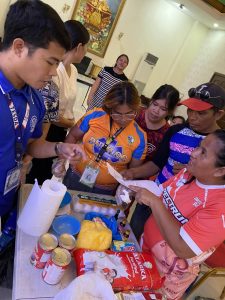The Department of Social Welfare and Development Field Office 7-Central Visayas invites local government units to support and replicate the SHIELD Against Child Labor project, which helps eliminate child labor in communities.

Piloted in 2017, the Strategic Helpdesks for Information, Education, Livelihood, and Other Developmental Services, or “SHIELD Against Child Labor,” project is DSWD’s contribution to RA 9231 or the Elimination of the Worst Forms of Child Labor Act.
In Region 7, where the number of reported child labor cases is high, the project implementation calls for expansion and replication in LGUs.
According to the Regional Director, Shalaine Marie S. Lucero, Central Visayas posed as one of the regions with the highest number of child laborers in the country, a report confirmed by the Department of Labor and Employment.
Both DSWD and DOLE reported that child laborers are working in the streets, plantations, and factories, and some are working as domestic workers and engaging in sexual exploitation.
“We see seasonal trends for child labor. During the holidays, children are being used to produce firecrackers and sell holiday ornaments,” pointing out that local businesses often use children to augment their workforce needs during peak seasons.
The official also said, “While we encourage local businesses to grow, children should not be subjected to child labor while others gain advantage. The project will help the community since there has been no help desk yet specific to child labor cases and interventions that will respond to the root causes of this issue.”
The project has three components to help eliminate child labor activities in the community:
- Child Labor Local Registry will be used as data banking to identify who and where the child laborers are;
- Establish the local help desks at the barangay level to facilitate the reporting of cases and access to services of other agencies; and
- Organize, advocate, and capacity-building activities that will strengthen the awareness of the community about the dangers of child labor.
Through these mechanisms, communities will have immediate access to reporting and avail of the services by government agencies and non-government organizations.
Currently, DSWD 7 is actively engaging with different LGUs using orientation that will help them understand the project concept.
The Department has already engaged with 7 LGUs with agreements to replicate the project.
Isang Milyong Batang Malaya
The World Day Against Child Labor observance every June 12 calls for the removal of 1 million children in the worst forms of child labor.
This year, the theme “Bawat Bata, Malaya: Mithiin ng Nagkakaisang Bansa” emphasizes the need for collective efforts to ensure that every child is free from any form of abuse or exploitation and to have the opportunity to enjoy a critical stage of development filled with hope and promise for the future.
Lucero explained that poverty and limited access to education are the top reasons why children engage in early labor.
“Children have to carry the burden of earning for their families instead of developing their love for learning and going to school,” she explained.
Through the SHIELD Against Child Labor project, DSWD has provided 400 child laborers in the region with various assistance since 2021, including educational assistance, which helps them start anew.
Aside from the cash aid, the Department has also strengthened its advocacy efforts against child labor, online sexual abuse or exploitation of children, and other forms of human trafficking like prostitution. ###
(57) Views